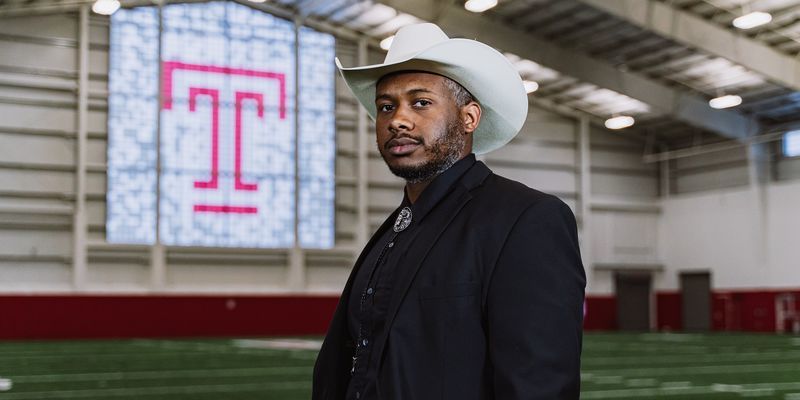Is NIL a good thing or a bad thing? Sports industry expert weighs in
Athletes like Livvy Dunne, Caitlin Clark and Bronny James became millionaires as college athletes thanks to recent changes to NIL rules. But what impact will the NIL revolution have on college sports as a whole?

Caitlin Clark took the sports world by storm during the 2023–2024 season with the University of Iowa women’s basketball team. The 22-year-old broke records, both on the court and with the crowds of people she attracted to come watch her play. She also led her team to a second consecutive national championship game and was named the top women’s college basketball player for a second consecutive season.
At the end of the thrilling run, some people believed Clark would be better off forgoing the WNBA draft, in which she was the consensus number one pick, and returning to Iowa for another season. Years ago, it would have seemed illogical and, frankly, reckless for someone like Clark to pass up a guaranteed contract and instead return to college athletics, where players risk potentially lowering their draft stock, or worse, suffering a major injury.
Clark ultimately declared for the draft and was selected first overall by the Indiana Fever. But how did we get to the point where college athletes could even consider giving up guaranteed professional contracts to stay in school?
“The answer lies in recent changes to name, image and likeness (NIL) rules and laws,” said Thilo Kunkel, associate professor at Temple’s School of Sport, Tourism and Hospitality Management.
Kunkel has led extensive research into how NIL deals will impact college athletes and college sports. He discussed the forthcoming NIL revolution with ESPN in March of 2021, months before the National Collegiate Athletic Association (NCAA) changed its NIL rules.
Now that it has fully arrived in college, and even high school sports, Temple Now sat down with Kunkel to discuss the history and current state of NIL.
Don't want to read? Watch Thilo Kunkel break it down in this video.
What is NIL?
Thilo Kunkel: NIL is an acronym that stands for name, image and likeness, and refers to an individual’s right of publicity.
Name refers to a person’s legal name. Image refers to how someone visually appears, whether in photos or videos. And likeness refers to an athlete’s identity and persona, like their voice, habits or other unique characteristics.
The NCAA used to prohibit student-athletes from profiting from their NIL, despite these athletes’ contribution to the billion-dollar college sport industry. But that changed in July 2021, and student-athletes have gained the right to sign endorsement deals, appear in advertisements, sell merchandise or even get compensated for social media content.
What is the NIL legal landscape?
TK: During its formation in 1906, the NCAA highlighted amateurism, or unpaid participation, as a core aspect of its student-athlete competitions. Since then, numerous lawsuits have challenged the amateur aspect of NCAA competitions.
Two recent bills stand out. First, there was the Fair Pay to Play Act proposed in California in 2019, which allowed student-athletes in the state of California to benefit from their NIL. Then there was the NCAA v. Alston Supreme Court ruling on June 21, 2021, which ruled the NCAA’s restrictions on providing college athletes with non-cash compensation for academic-related purposes was in violation of anti-trust laws.
Following the Alston ruling, the NCAA adopted new policies allowing athletes to profit from their NIL.
These two rulings also opened the floodgates for states across the country to sign their own NIL laws for student-athletes, even at the high school level in some states.
What are NIL collectives?
TK: To answer this question, it’s important to understand the two main types of NIL deals: brand deals, and deals that result from collectives.
Brand deals are the purest form of NIL monetization. Brands generally pay for the fair market NIL value of athletes, who often act as endorsers for their products and services. University of Colorado quarterback Shedeur Sanders appeared in a KFC commercial as part of his brand deal with the restaurant chain.
Deals that result from collectives are less straightforward, and often receive more criticism.
Collectives are organizations that collect funds from businesses and boosters to facilitate NIL deals for athletes, with the goal of convincing athletes to commit to their school over others. Collectives generally pay for the athlete’s performance and are used as recruiting tools.
Quarterback Nico Iamaleava committed to the University of Tennessee thanks to a deal reportedly worth up to $8 million by the end of his junior year. The deal was arranged by Spyre Sports Group, an NIL collective associated with the University of Tennessee.
Collective deals have been criticized as “pay to play,” as the compensation often exceeds the fair market NIL value of athletes. Many fear that these kinds of deals will result in the top collegiate athletic programs dominating recruiting, as they have greater resources to facilitate deals with the nation’s top prospects.
Is NIL a good thing or a bad thing?
TK: Those criticizing NIL argue that most NIL deals go to revenue-generating sports, like football or basketball, and heavily favor male athletes at top institutions, creating more inequality and challenging competitive balance. There are also arguments that NIL sponsorships and donations to NIL collectives cannibalize athletic programs, meaning these programs have less income to distribute across all student-athletes.
However, I personally consider allowing athletes to profit from their NIL a positive. It empowers them to build their personal brand and secure financial benefits while still in college. They can collaborate with businesses, engage with fans and set the foundation for their future careers, both in and out of sports.
The spread of NIL has also created numerous jobs in the sport industry, ranging from athletic department jobs focused on compliance or on helping student-athletes build their personal brand, to agents or brand managers pushing into the college sport industry.
What drives value in an NIL deal?
TK: Typically, there are a combination of factors that influence the value of an NIL deal. For NIL deals from collectives, the athlete’s performance is the number one consideration.
Iamaleava is a good example here. He was believed to be one of the best quarterbacks coming out of high school and was heavily recruited by the top college football programs. A player of his caliber has the potential to completely transform a football team, as is evident by his massive NIL deal.
For NIL deals from brands, the athlete’s personal brand and how the athlete is perceived by their fans play a huge role. This often includes their athletic performance, but can also include their appearance, personal life and what makes the athlete unique.
College basketball player Hansel Enmanuel demonstrates how a student-athlete can leverage their unique story to secure NIL deals with brands. Enmanuel lost his left arm in a tragic accident at the age of 6, yet he has become a basketball celebrity for his unique and flashy one-handed playstyle. He’s signed NIL deals totaling more than $1 million with brands like Oakley and Champs Sports, despite playing for an average college basketball team.
Another key driver of NIL value is the audience that the athlete can reach—via mainstream media or social media. LSU gymnast Livvy Dunne is a good example of how a social media following can drive NIL value. Dunne has garnered an international following on social media, including more than 5 million Instagram followers, which is key to her NIL value. She’s signed deals with brands like American Eagle and Motorola, and it is estimated that her NIL value is close to $4 million.
Competing in a nationally televised sport helps an athlete generate NIL value. University of Georgia quarterback Carson Beck has an NIL valuation of over $1.6 million and famously splurged on a Lamborghini worth more than $270,000.
Being the relative of a famous athlete or celebrity can also drive NIL value, as people already have knowledge and expectations derived from the memories of their relative’s performance. Being a household name generates media attention, and journalists are more likely to report on the athlete, helping them gain additional attention and social media followers. Shedeur Sanders, Bronny James and Archie Manning have all profited in part from their relatives’ success through their NIL deals.
What does this mean for the future of college sports?
TK: It’s hard to say right now, but one thing is for sure: NIL legislation changes have fundamentally changed the world of college sport and provide exciting opportunities for athletes and those involved in the sport industry. It’s a very dynamic field and we are still in the early stages, so we will witness the evolution of the field over the coming years. Enjoy being part of history.
Also read
- A Hub for Hospitality: Through experiential learning and career-relevant coursework, the School of Sport, Tourism and Hospitality Management prepares students for careers in the fast-paced tourism, hospitality, and event industries.
- Leaders in Sports Industry Research: The Sports Industry Research Center supports the economic, social and environmental sustainability of sport through research, training, marketing and management services. Since it was founded in 2008, the center has partnered with clients like the NCAA, the Utah Jazz, and the Philadelphia Convention and Visitors Bureau.
- Become an Owl: Learn more about applying for one of our undergraduate, graduate or professional programs.


